6. BioFabricating Materials¶
Class Notes¶
October 27th 2020 by Cecilia Raspanti
This last century we have been crafting, designing and growing materials independently from their future use. This has caused major design flaws in our daily lives, where we find ourselves surrounded by plastics, while observing knowledge about local materials and techniques disappear and left unused even when in abundance.
This class focused on exploring material alternatives to the current ones. By bridging craftsmanship techniques and todays easier access to technologies, we explored alternative material resources in order to craft their processing and develop products and materials hand in hand.
Research¶
Useful links¶
BIOMATERIALS¶
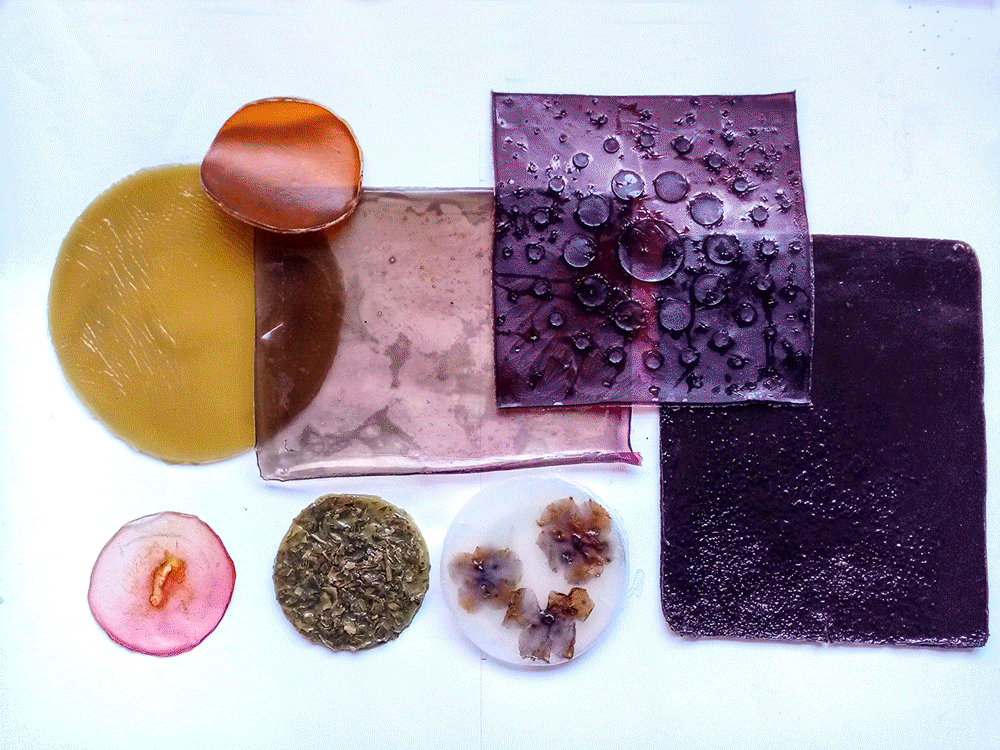
Crafted Bioplastic¶
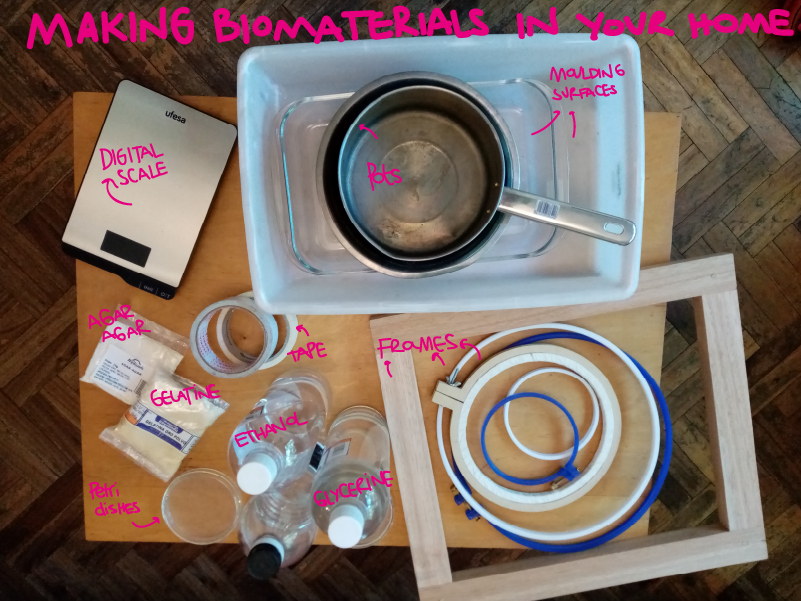
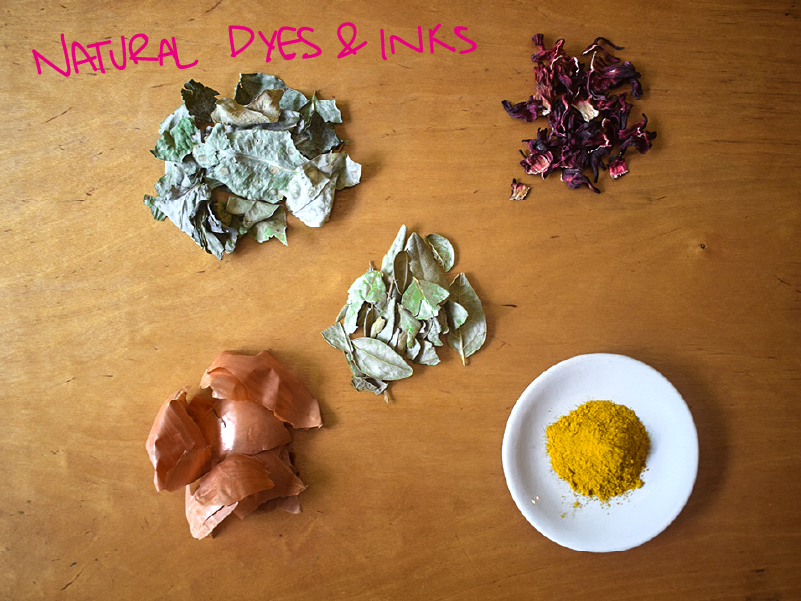
GELATINE¶
Gelatine is an animal derived ingredient, made from the collagen present in animal parts. Gelatine bioplastics are crafted usually from powder, in combination with water and glycerine.
Recipe¶
Ingredients
- Gelatine
- Glycerol
- Water
Tools
- Pot, spoons, stove, measuring cups
- Frame, moulding surfaces, tape
- Additives: Paint, powders, pigments, food colorants, natural dyes
Process¶
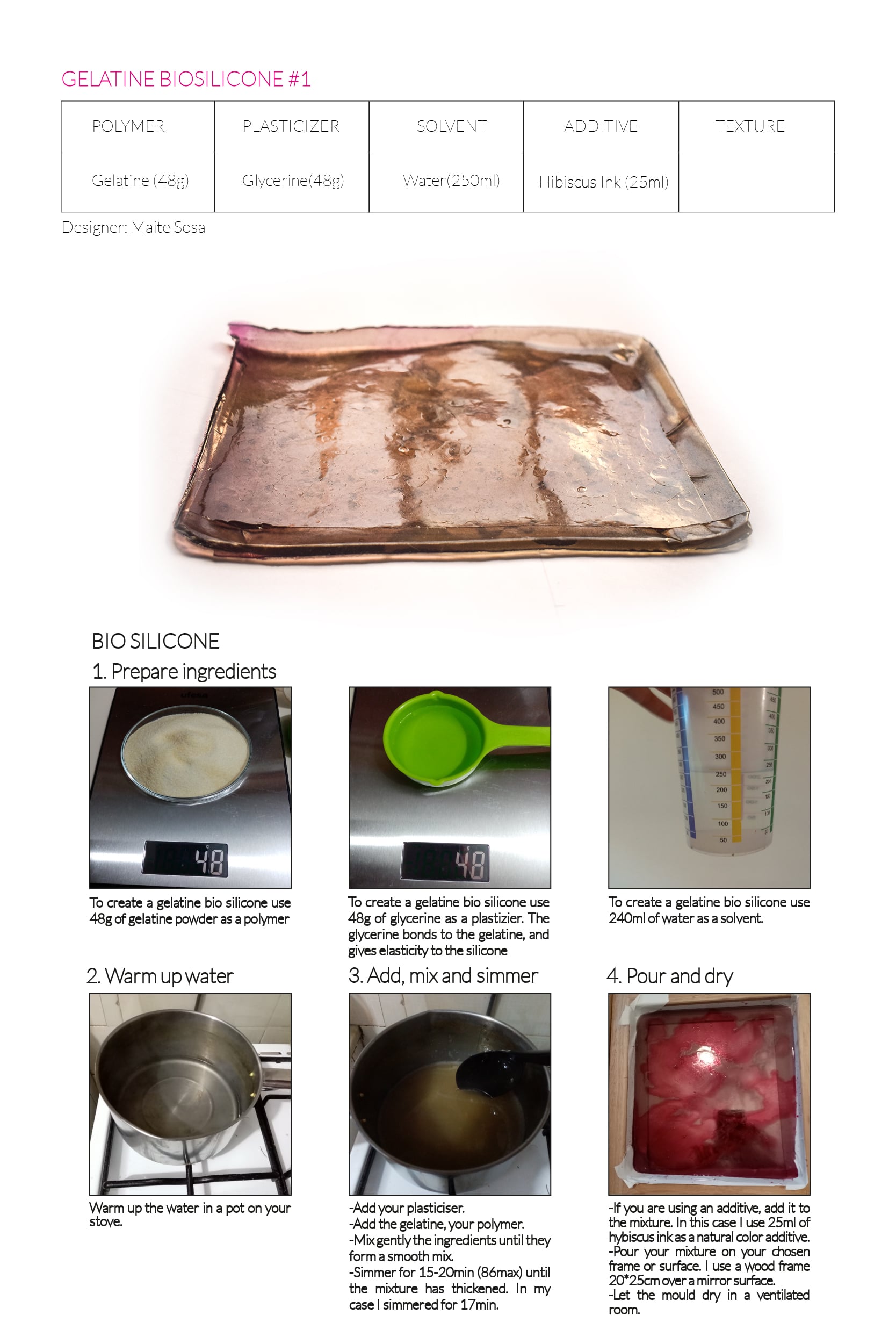
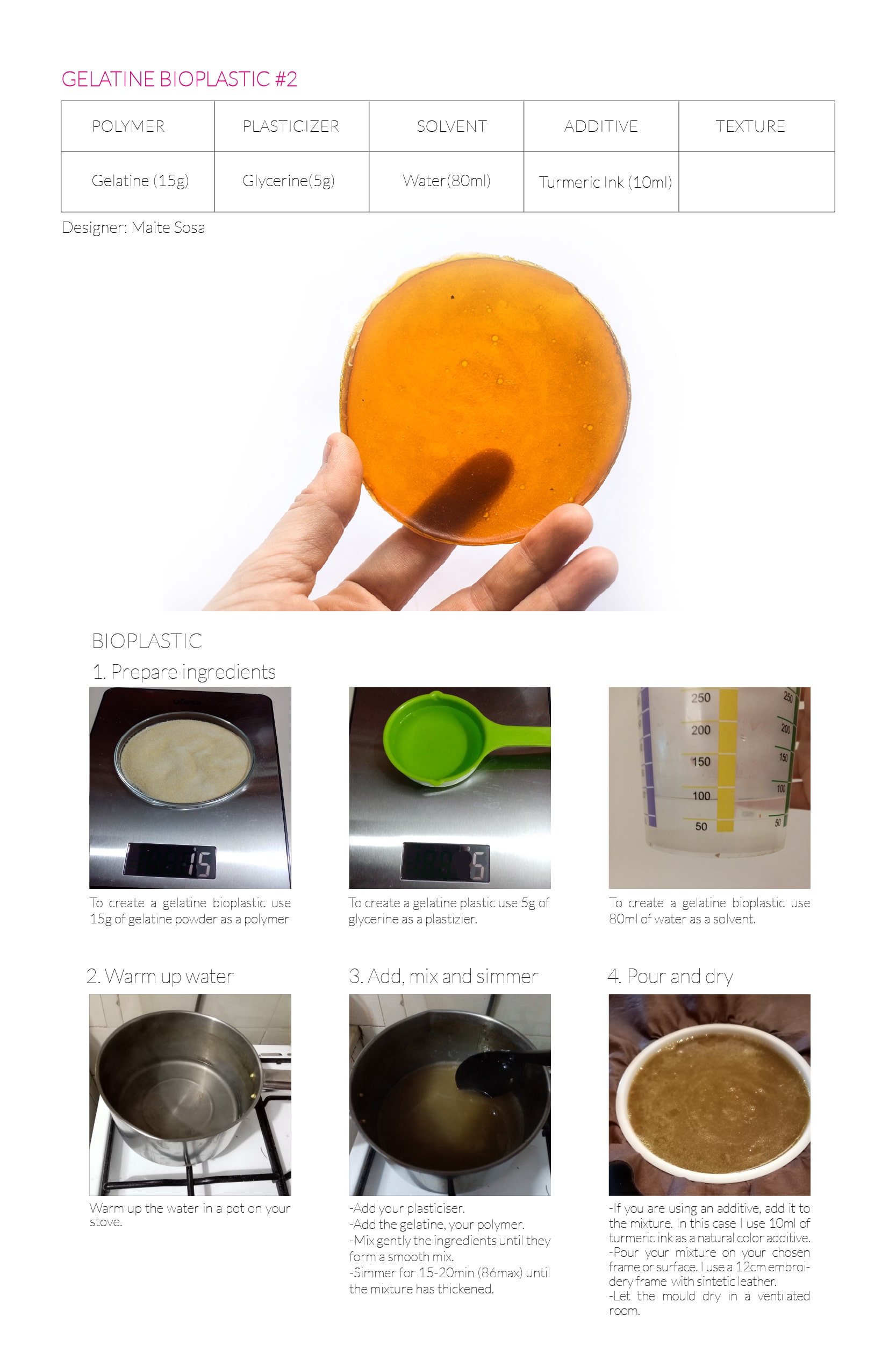

AGAR¶
Agar or agar-agar, is a jelly-like substance, obtained from red algae. Agar is a mixture of two components: the linear polysaccharide agarose, and a heterogeneous mixture of smaller molecules called agaropectin.
Agar is a compound know as a polysaccharide. Agar Bioplastic is made by mixing water, glycerine and agar-agar powder.
Recipe¶
Ingredients
- Agar Agar
- Glycerol
- Water
Tools
- Pot, spoons, stove, measuring cups
- Frame, moulding surfaces, textiles, tape
- Additives: Paint, powders, pigments, food colorants, natural dyes
Process¶
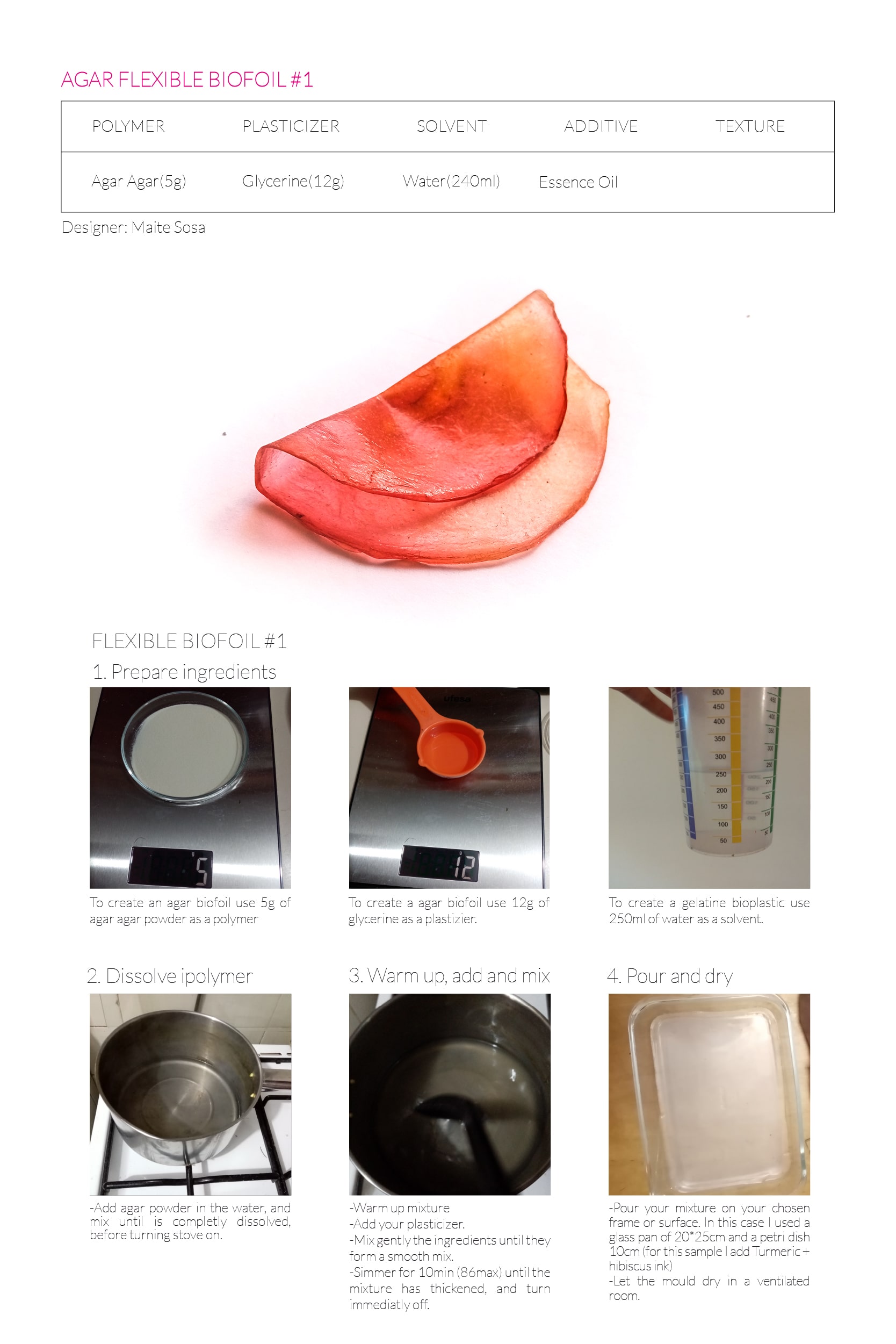

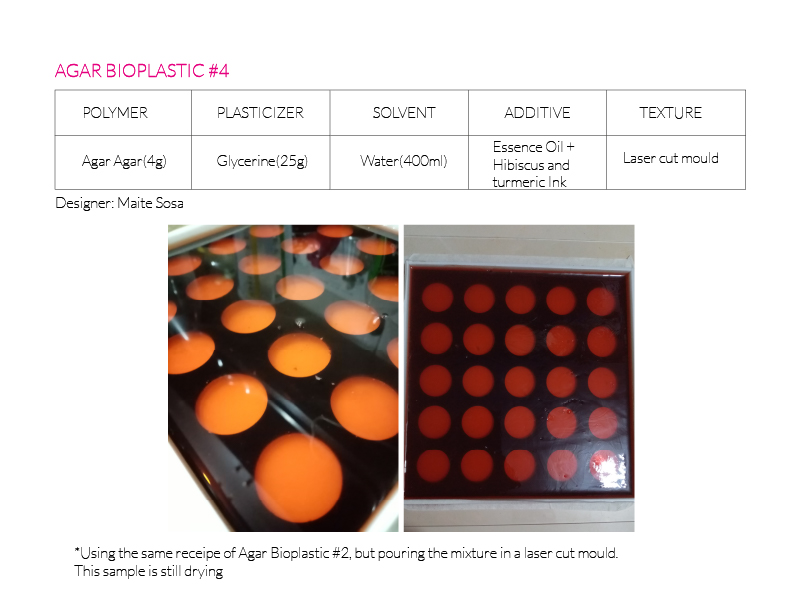
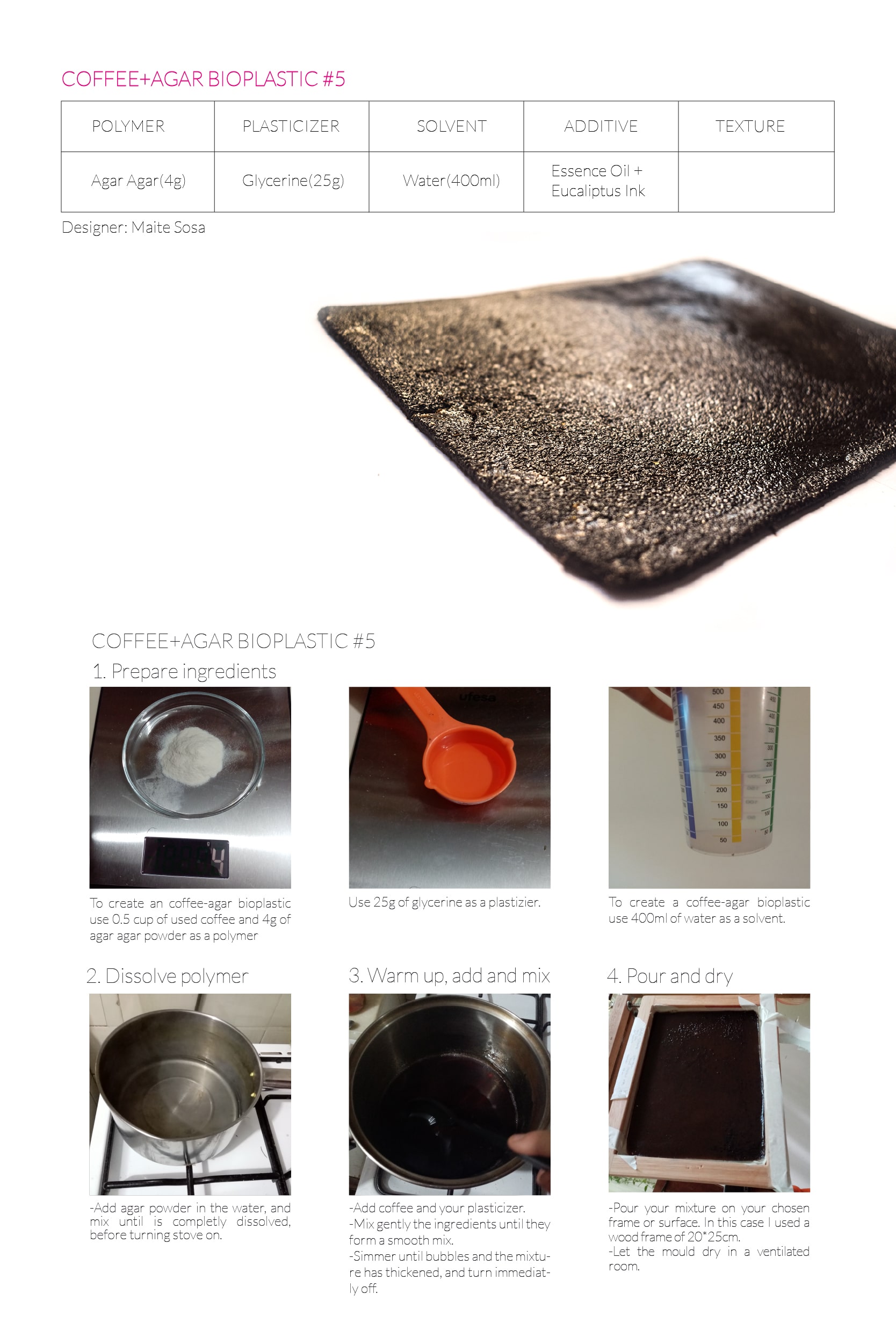
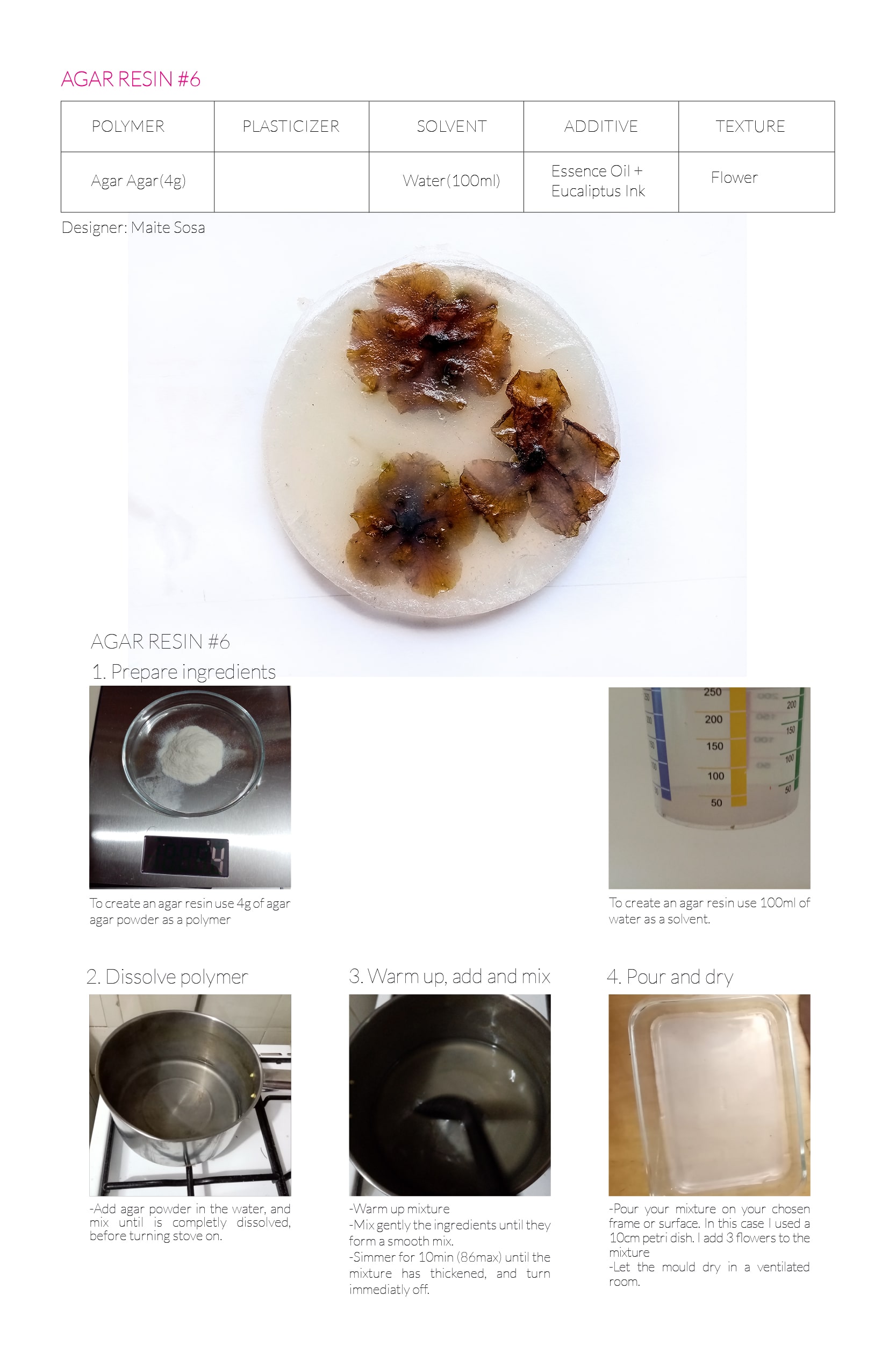
Grown Materials: Kombucha¶
Kombucha is a fermented tea with a symbiotic colony of bacterial yeast (SCOBY) Bacteria feeding on a liquid medium of sugars and tea, start creating an acidic environment hich allows them to thrive and spin cellulose layers. Kombucha material is a layered cellulose, where the grown material is washed and then dried, either flat or in a shape.
Recipe¶
Ingredients
- 1l of black or green tea
- 100g of white sugar
- 1 Kombucha SCOBY
- Vinegar
Tools
- 1 Clean container (tray, pan, jar, box)
- Measuring cups
- Digital scale
- Fabric
- tape
- Food colorants or natural dyes
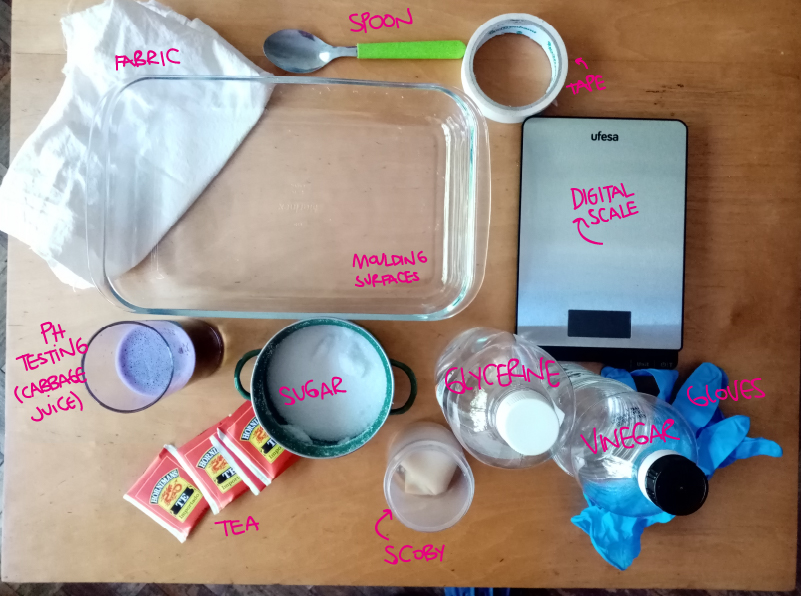
Process¶
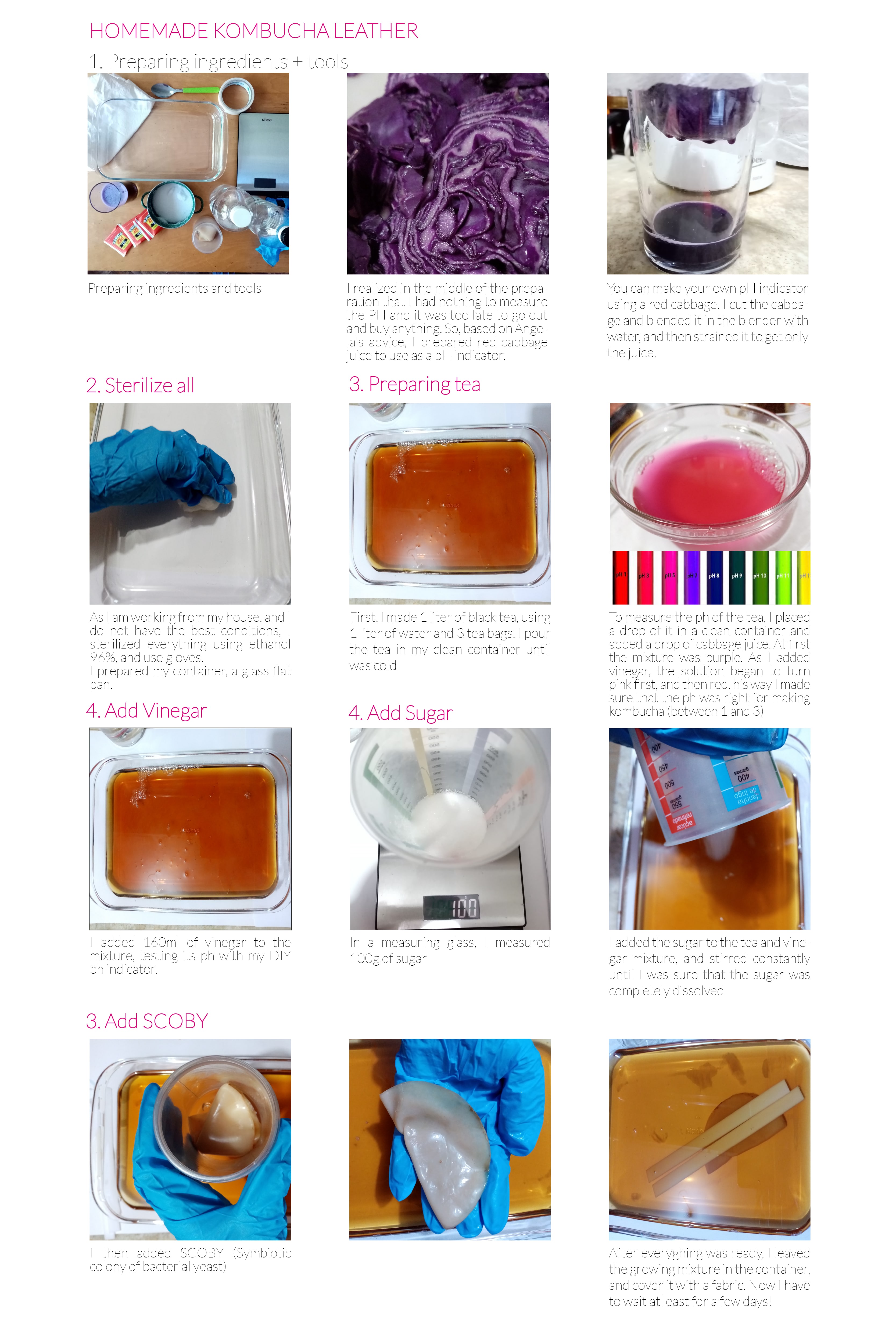
*Special thanks to Lucrecia for getting SCOBY for both of us ♥
Gallery¶
















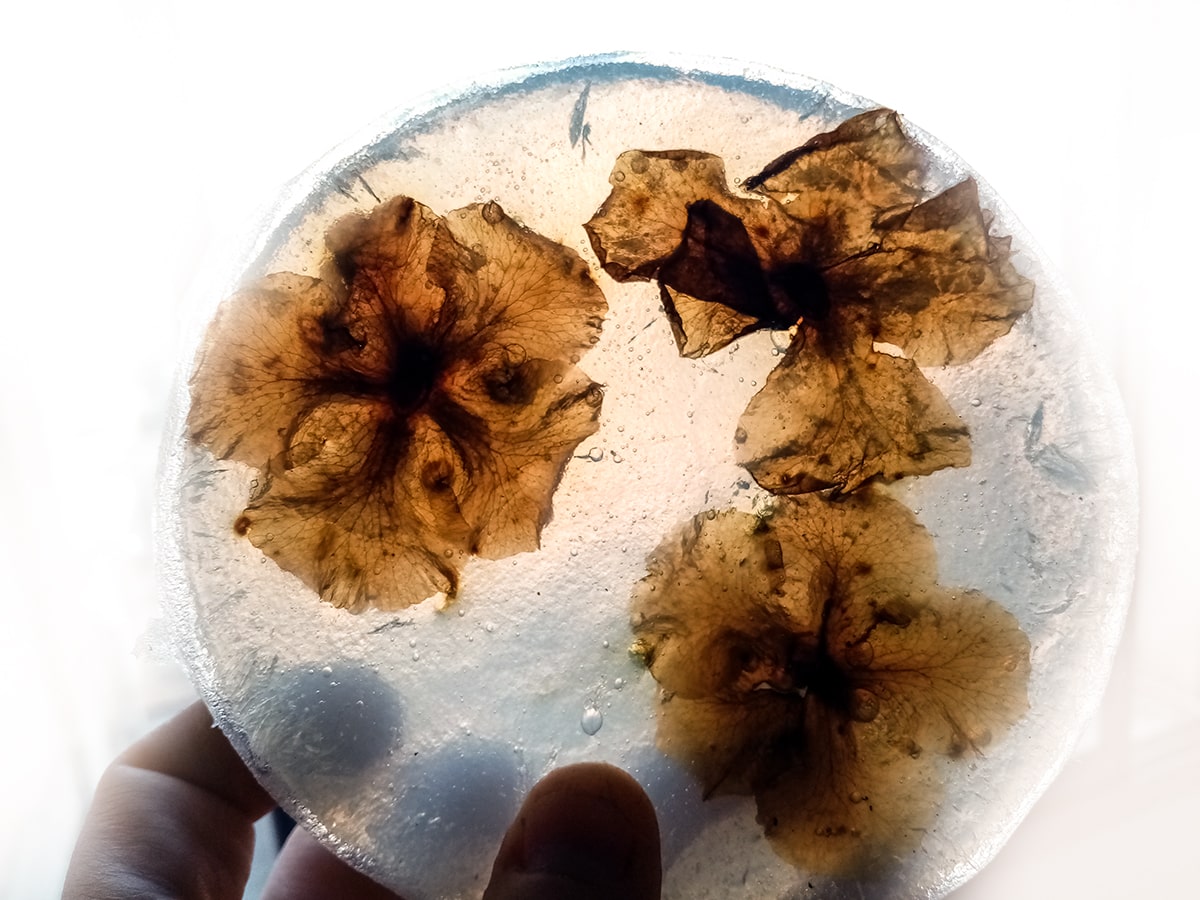
Improvements to consider in the future¶
-This is a difficult assignment to do without a Biolab. In these instances I wish I could be in a specially equipped Lab, because I feel I could get a lot more out of the experience. I wasn't able to try out some of the materials because I didn't manage to buy some ingredients here in Uruguay, for example alginate. Anyway, I also learned that even though I don't have all the tools, I still achieved some interesting results, and a lot of learning.
-As a future lesson, it is good to have a large space to work, and try to be as tidy as possible. It is also important to try to keep the tools and work spaces clean, to avoid contamination.
-Trying to make a 5mm bioplastic is for someone who has a lot of patience, or who has access to a dehydrator. In my case, I'm not thaaat patient and I don't have a dehydrator, so by rushing to remove a sample, I accidentally broke it :(. Maybe it's better to start with smaller thicknesses.
-I had two small accident due to my anxiety. I left the agar foil sample drying on the window (Chronicle of a death foretold), and it fell down the building (oops), and unfortunately still haven't recover it (which breaks my heart because it was a very nice sample). I also put one agar sample in the oven with a very very low temperature, to try to make it dry faster. Not only did not dry, but it melted again, in an irregular and very ugly way, so now it is ruined :).
-For some reason the samples made with agar do not look as good as the ones I made with gelatin. Maybe they are not quite dried yet
-I really like the sample made with a laser cut mould, so I think I would love to continue investigating that path.